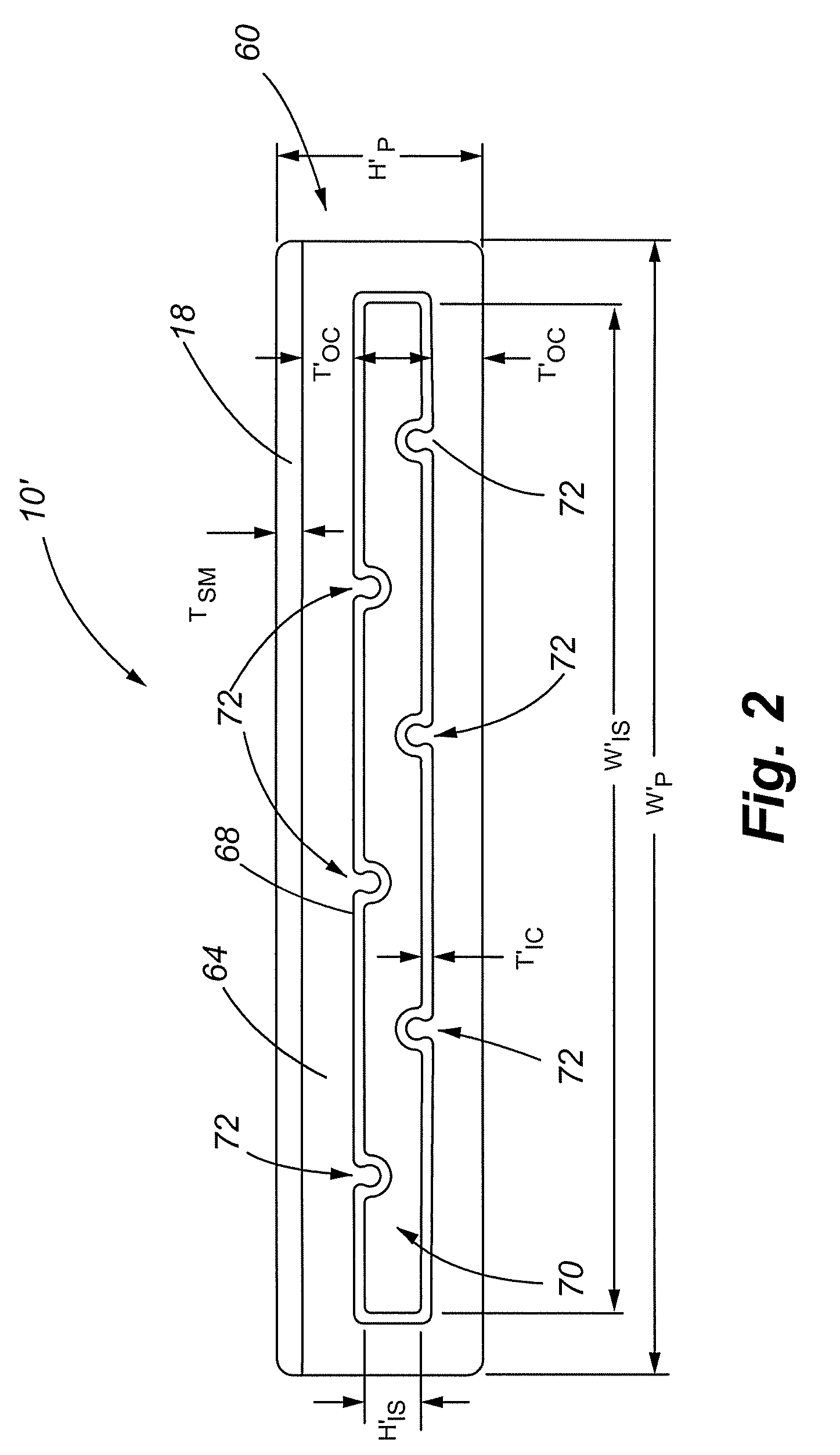Composite decking material and methods associated with the same
a composite decking and material technology, applied in the field of composite decking materials, can solve the problems of warped decking, heavy maintenance, and high cost, and achieve the effects of reducing the risk of tripping
- Summary
- Abstract
- Description
- Claims
- Application Information
AI Technical Summary
Benefits of technology
Problems solved by technology
Method used
Image
Examples
Embodiment Construction
[0052]A synthetic construction / decking material is provided, such as a thermoplastic composite building material with increased strength and functionality. In at least one embodiment of the invention, the material comprises a structural core with a exterior layer or wearing surface having suitable properties for a walking surface. Other applications of the present invention include use of the composite profile for handrails, seating surfaces, and furniture surfaces, etc.
[0053]One embodiment of the present invention comprises a construction member that, among other things, has application for use as deck planking. Referring now to FIG. 1, a side elevation view of an end of a plank 10 in accordance with an embodiment of the present invention is shown. The plank 10 comprises a structural core 14, at least a portion of which is overlain with a surfacing material 18.
[0054]The surfacing material 18 preferably provides a comfortable walking surface with resistance to heating from sunlight....
PUM
| Property | Measurement | Unit |
|---|---|---|
| width | aaaaa | aaaaa |
| width | aaaaa | aaaaa |
| height HP | aaaaa | aaaaa |
Abstract
Description
Claims
Application Information
 Login to View More
Login to View More - R&D
- Intellectual Property
- Life Sciences
- Materials
- Tech Scout
- Unparalleled Data Quality
- Higher Quality Content
- 60% Fewer Hallucinations
Browse by: Latest US Patents, China's latest patents, Technical Efficacy Thesaurus, Application Domain, Technology Topic, Popular Technical Reports.
© 2025 PatSnap. All rights reserved.Legal|Privacy policy|Modern Slavery Act Transparency Statement|Sitemap|About US| Contact US: help@patsnap.com



